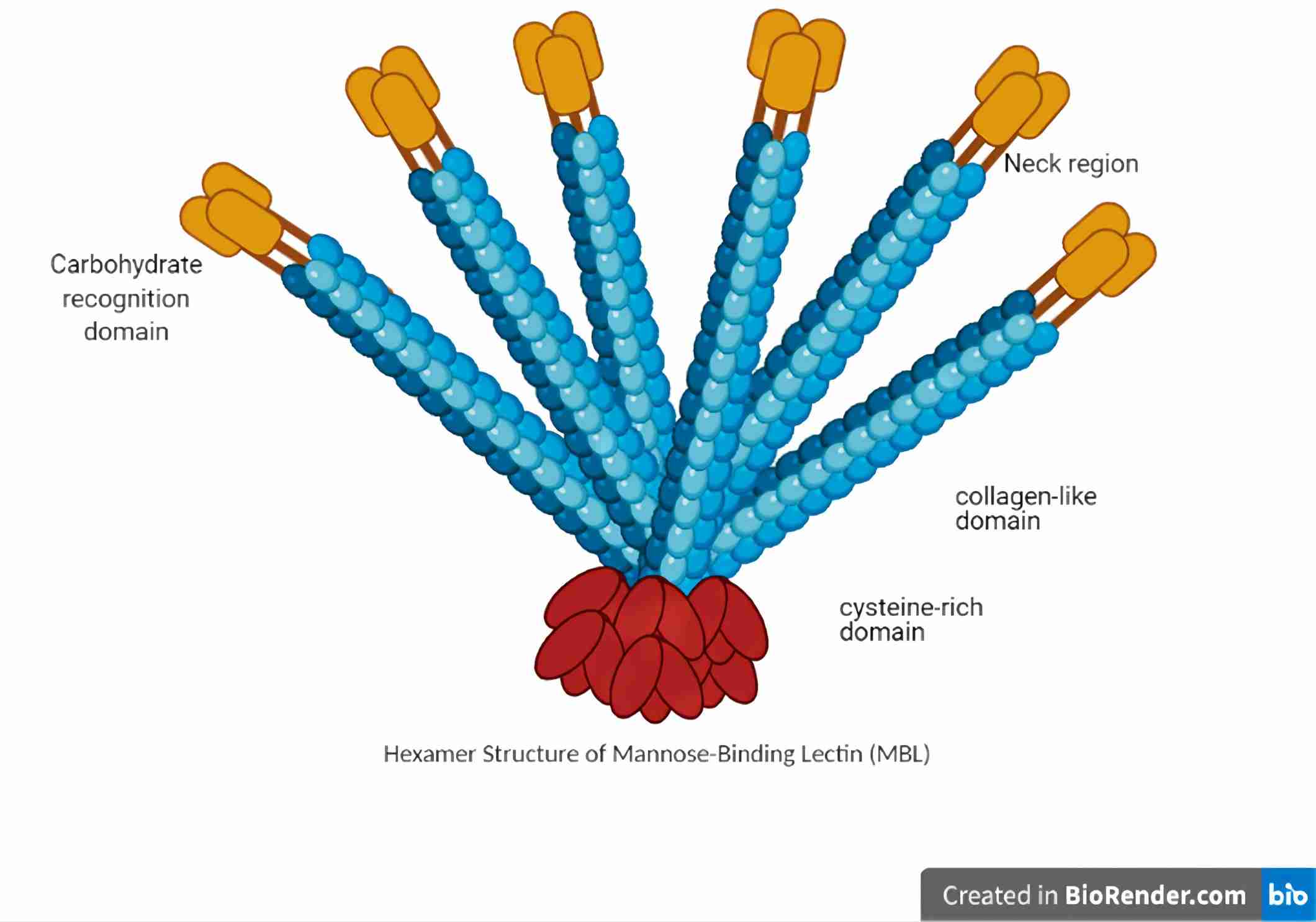Mannose Binding Lectin 1 (MBL1)
The complement lectin pathway plays a significant role in recognizing and clearing the pathogenic microbes before adaptive immunity. The complement lectin pathway is similar in structure to the classical pathway, except that activation or recognition pattern is different. The activation of the complement lectin pathway is mediated by pattern recognition proteins, including mannan-binding lectins (MBLs), ficolin-1, ficolin-2, ficolin-3, and collectin-11.
MBLs, also known as mannan-binding proteins (MBPs), are large plasma glycoproteins belonging to the collectin family since they all contain collagenous regions and lectin domains. In humans, only one MBL form has been identified, whereas two functional MBL isoforms (MBL1 and MBL2) have been isolated rodent serum. Mouse MBL1 or MBP-A is a polypeptide chain composed of 239 amino acid residues, containing four domains, a cysteine-rich domain at the N-terminus, a collagen-like domain, an α-helical neck region, and a carbohydrate-recognition domain at the C-terminus. Similar to human MBL, mouse MBL1 comprises 21 amino acid residues including 3 cysteine residues at the N-terminal region, which is involved in the oligomerization. Rat MBL1 usually forms a hexamer of subunits composed of three identical polypeptide chains.
MBL1, like complement C1q, forms a complex with MBL-associated serum proteases (MASPs) in a Ca2+ dependent manner. Upon MBL1 bind to the specific carbohydrates (such as mannose, fucose, and N-acetylglucosamine sugar motifs) on the surface of a variety of microorganisms, the MASPs become activated to cleave both C4 and C2, producing C3 convertase (C4b2a) and activating the complement lectin pathway. MBL1 also can bind to late apoptotic cells, apoptotic vesicles, and necrotic cells, but not early apoptotic cells, to promote their uptake and clearance by macrophage. MBL1, as well as MBL2, have been demonstrated to associate with immunodeficiencies, brain ischemia/reperfusion injury, and rheumatic heart disease.
 Fig. 1 The structure of MBL.1
Fig. 1 The structure of MBL.1
Reference
-
Idowu, Peter A., et al. "Activity of mannose-binding lectin on bacterial-infected chickens—a review." Animals 11.3 (2021): 787.
For Research Use Only.

 Fig. 1 The structure of MBL.1
Fig. 1 The structure of MBL.1